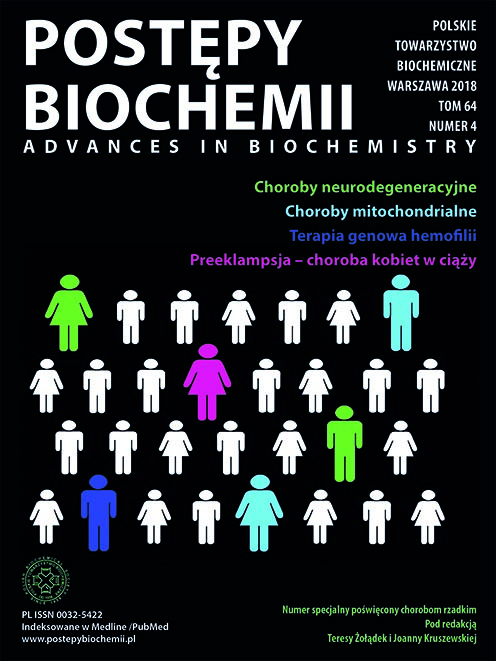Gene therapy of haemophilia â has the cure come within reach?
DOI:
https://doi.org/10.18388/pb.2018_145Abstract
Haemophilia is a bleeding disorder (usually congenital) caused by the deficiency of coagulation factor VIII (haemophilia A) or IX (haemophilia B). The genes encoding factors VIII and IX are located on the X chromosome, so the symptoms of congenital haemophilia A and B occur predominantly in males. Recurring episodes of spontaneous bleeding into joints are the main symptom of haemophilia, which lead to haemophilic artropathy. Historically, patients with haemophilia were treated with whole blood transfusions and then with blood plasma. The first big breakthrough in treatment efficacy was the advent of cryoprecipitate, followed by lyophilized coagulation factor concentrates, derived from plasma. The latter dramatically improved patientsâ quality of life and allowed for prophylactic self-infusions at home (home treatment). Since the 1990s, the standard treatment has also included recombinant coagulation factor concentrates derived from cell cultures. Today, the main challenges are the need for frequent venipunctures (factor concentrates must be administered intravenously) to maintain successful prophylaxis and emergence of neutralizing antibodies in response to exogenous coagulation factors. Several novel recombinant factors with extended half-life were approved in recent years. Clinical trials of other new technologies are ongoing. These are non-replacement therapies with different mechanisms of action (e.g. emicizumab, a bispecific antibody that mimics the procoagulant activity of factor VIII; fitusiran, siRNA downregulating antithrombin III) and gene therapies using AAV vectors.
Downloads
Published
Issue
Section
License
All journal contents are distributed under the Creative Commons Attribution-ShareAlike 4.0 International (CC BY-SA 4.0) license. Everybody may use the content following terms: Attribution — You must give appropriate credit, provide a link to the license, and indicate if changes were made, ShareAlike — If you remix, transform, or build upon the material, you must distribute your contributions under the same license as the original. There are no additional restrictions — You may not apply legal terms or technological measures that legally restrict others from doing anything the license permits.
Copyright for all published papers © stays with the authors.
Copyright for the journal: © Polish Biochemical Society.




